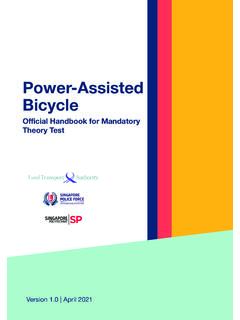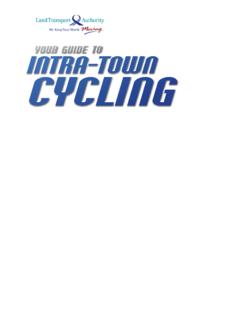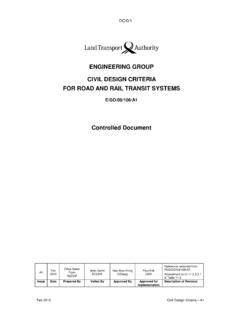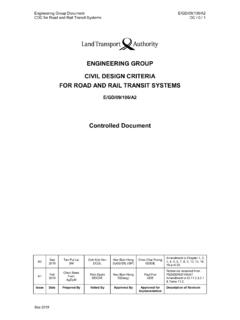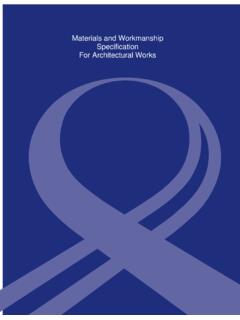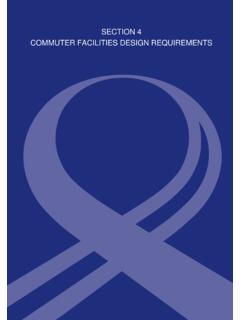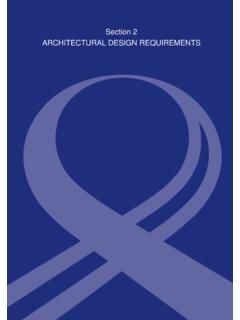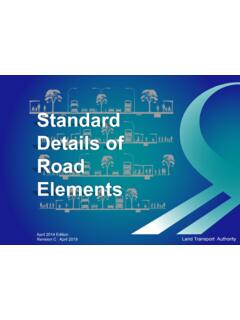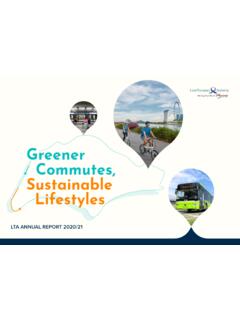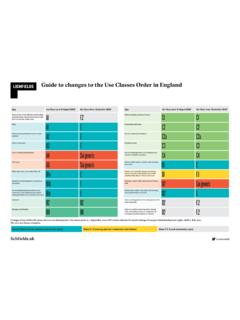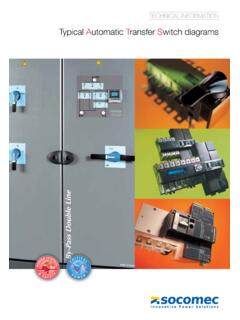Transcription of E-Scooter
1 1E-ScooterVersion | April 2021 Official Handbook for Mandatory Theory Test22 DisclaimerNo part of this publication may be reproduced or transmitted in any forms or by any means, in parts or whole, without the prior written permission of the publisher:Land Transport Authority1 Hampshire RoadSingapore 219428 Hotline: 1800 2255 582 Published online by Land Transport AuthorityLast updated 28 Apr 2021. The information in this handbook is accurate at the time of 1: General Information on Active Mobility Devices in SingaporeMODULE 2: Pre-Journey and Equipment Check for E-Scooter Types of Active Mobility Personal Mobility Devices (PMDs) Types of Personal Mobility Devices (PMDs) Non- motorised Power-Assisted Bicycles (PABs) Personal Mobility Aids (PMAs) Types of Pre-Ride Guidelines for Riding on Public Paths Device Criteria for UL2272 Certification and Fire Safety Maintenance of an Pre-Ride Equipment Check on Safety Gear and Parking, Security and Storage of Planning Your Third-Party Liability Insurance5688991011111213151617182022242 4272829304 MODULE 3.
2 Rules and Code of Conduct for Using an E-Scooter Handling Standing on an E-Scooter Without Starting and Turning Left or Moving in a Straight Riding at Low Riding Uphill and Types of Paths, Signs and Path Infrastructure Recognising Footpaths and Cycling Special Path Signs and Types of Road Crossings Rules and Regulations for PMDs/E- Can You Ride a PMD/ E-Scooter ? Where Can You Ride an E-Scooter ? Other Regulations on Navigating Riding Good Practices and Code of Conduct Riding an E-Scooter on Cycling Identification of Potential What to Do in an Accident31343435353535363636384044484848 495154555759 APPENDIX A5 IntroductionThis handbook aims to provide the necessary information for users of electric scooters (e-scooters) to ride these devices on paths in a safe and responsible manner.
3 Knowing and applying the safety guidelines will help to reduce accidents and cultivate a gracious active mobility culture. In addition, users who do not comply with the rules may face prosecutorial handbook will cover the following modules:Module 1 Module 2 Module 3 General Information on Active Mobility Devices in SingaporePre-Journey and Equipment Check for E-Scooter RidersRules and Code of Conduct for Using an E-Scooter 6 Module 1 General Information on Active Mobility Devices in SingaporeMODULE 17 Module 1 Learning Identify four active mobility List the types of paths where each device can be List at least five guidelines for riding on public Mobility Devices (PMDs)BicyclesPersonal Mobility Aids (PMAs)
4 Types of PathsPre-Ride PreparationGuidelines for Riding on Public Paths8 Module Types of Active Mobility DevicesThis module introduces the different types of active mobility devices and provides an overview of the rules pertaining to usage and ownership of active mobility devices, active mobility code of conduct and safe riding mobility devices can be broadly categorised into the following types:a)b)c)Personal Mobility Devices (PMDs)BicyclesPersonal Mobility Aids (PMAs) motorised PMDs: Electric scooters (e-scooters), hoverboards PMDs: Kick-scooters, skateboards bicyclesPower-assisted bicycles (PAB) 9 Module Personal Mobility Devices (PMDs)This group of devices covers a variety of wheeled vehicles built to transport people.
5 They may be propelled by an electric motor, human power or both. This does not include PMAs, bicycles, inline skates or roller-skates. All PMDs can be ridden on cycling paths but only non- motorised PMDs can be ridden on footpaths. All PMDs cannot be ridden on of motorised PMDs include hoverboards, unicycles and motorised of non- motorised PMDs include skateboards and Types of Personal Mobility Devices (PMDs)10 Module E-ScootersE-scooters are motorised PMDs with handlebars. Owners should take note of the following information:a)b)c)d)f)e)g)E-scooters must be registered with must be inspected for device compliance by LTA-authorised E-Scooter Inspection must be affixed with a registration mark and identification mark.
6 The registration mark is a sticker issued by the inspection centre bearing LTA s logo and the registration need an E-Scooter Theory Test Certificate to ride an E-Scooter *.E-scooters can only be ridden on cycling paths. All motorised PMDs, including e-scooters, must be certified to the UL2272 fire safety standard. You should adopt proper and safe handling habits, to minimise the risk of fire minimum age to ride an E-Scooter is 16 years old. Under-aged riders can ride under supervision by an adult (at least 21 years old) who has obtained an E-Scooter Theory Test Certificate*.*Only applicable when theory test requirement is Non- motorised Bicycles A bicycle, also called a bike or cycle, is a human-powered or motor-powered, pedal-driven vehicle, having two wheels attached to a frame, one behind the other.
7 A)c)b)d)e)Road BicyclesMountain BicyclesTrack Bicycles / Fixed Gear BicyclesHybrid BicyclesFoldable BicyclesTypes of non- motorised bicycles:12 Module 1a)b)c)d)e)PABs need to be type-approved, sealed and registered at an LTA-authorised Inspection Centre before should have a clearly visible number plate affixed on the rear of the device. You need a PAB Theory Test Certificate to ride a PAB*.PABs can be ridden on cycling paths and on minimum age for riding a PAB is 16 years old; the same age limit is applied for pillion passengers on Power-Assisted Bicycles (PABs)A Power-Assisted Bicycle (PAB), also commonly known as an e-bike, looks like a conventional bicycle, except that it is equipped with an electric motor to assist with pedalling.
8 Important Information on PABs*Only applicable when theory test requirement is Personal Mobility Aids (PMAs) Personal Mobility Aids (PMAs) include wheelchairs, motorised wheelchairs or mobility scooters which are designed to carry an individual who is unable to walk or has walking difficulties. PMAs can be ridden on cycling paths and footpaths. 14 Module 1 TYPES OF ACTIVE MOBILITY DEVICESRULESPMD - PMD - motorised (e-unicycle, hoverboard, motorised skateboard) PMD - non- motorised (unicycle, skateboard, kick- scooter ) BicyclePABPMAe-scooterRegister with LTA?Device CriteriaMinimumAgeTheory Test required?Where to ride?Cycling PathFootpathRoadYesYesYes*Yes*YesYesYesY esYesYesMax width 70 cm(on paths)Motor assist must cut off at 25km/hEN15194compliantRider: 16 yrs oldPillion: 16yrs oldMax width 70 cmCertified to UL2272 fire safety standardMax speed 25km/h16 yrs old.
9 <16 yrs, must be supervised by an adult who passed the E-Scooter Theory Test*Max unladenwt. - 20kg (on paths)Max unladen wt. - 20kgYesYesYesYesYesNoNoNo16 yrs oldNoNoNoNoNoNoNoNoNoNoNoNoNoNoNoMaxdevice speed of 10km/h for motorised PMAs*Only applicable when theory test requirement is 1 The chart below summarises the types of paths and roads, and the types of devices allowed on them. Types of Pathsa)b)Cycling Paths have markings on the ground. These paths have a speed limit of 25km/h and can be used by all active mobility do not have any Cyclist or PCN path markings. The speed limit for footpaths is 10km/h. Non- motorised devices and PMAs can be used on footpaths. NO LOOSE LOADSBRIGHT COLOURED CLOTHINGHELMETCOVERED SHOES16 Module Pre-Ride Preparation a)c)b)d)e)Wear bright-coloured clothing to increase your visibility to other vehicles and that your lights, brakes and tyres are in good working condition before setting that you are comfortable and in full control of your device.
10 Adjust your seat or handlebars before setting that all loads and accessories are properly secured and do not affect your ability to control the your ride ahead of time and pick the safest route. On paths, choose a route with cycling paths as much as possible. For bicycles and PABs on roads, avoid heavy traffic for your own safety. 17 Module Guidelines for Riding on Public Paths a)c)b)d)h)i)j)k)e)f)g)Always give way to your speed and go slow around down when approaching bus stops and/or intersections of public and walk your device in crowded alert others before overtaking. Keep left on paths unless overtaking. Keep a safe distance from other path users, especially when overtaking, to avoid a shining your lights onto the face of other path users.
